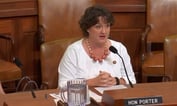(This article originally appeared on ALM sister publication, New York Law Journal.)
The Protecting Americans from Tax Hikes (PATH) Act, which was signed into law on Dec. 18, 2015, contains more than 100 tax provisions. The law makes permanent more than 20 provisions that had expired at the end of 2014. It also extends other provisions through 2019, or for two years (2015 and 2016). According to the Joint Committee on Taxation, the extenders are projected to cost the government $628 billion over 10 years. The extenders and other provisions in the PATH Act impact individuals and businesses. Here is a roundup of the key provisions for businesses and how they affect 2015 returns as well as tax planning for 2016.
Deductions
A number of business deductions have been made permanent or extended, as indicated below:
Write-offs for equipment purchases. Two important deduction options apply to purchases of equipment and machinery:
• Sec. 179 deduction. The $500,000 deduction limit and the $2 million cap on equipment purchases have been made permanent. (Under 26 USC §179, such costs may be deducted as expenses and are not required to be capitalized and depreciated.) They had been set to revert to $25,000, and $200,000, respectively, in 2015. Starting in 2016, the dollar amounts can be adjusted for inflation. Also made permanent is the treatment of off-the-shelf software as qualifying for a Sec. 179 deduction as well as the option to make or revoke a Sec. 179 election without IRS consent.
• Bonus depreciation. This deduction, which applies to new (not pre-owned) property, has been extended through 2019. It allows for a 50 percent additional first year depreciation deduction. However, the 50 percent write-off for the cost of qualified property applies only for 2015, 2016, and 2017. In 2018, the deduction decreases to 40 percent; in 2019 it is 30 percent.
Write-offs for leasehold, restaurant, and retail improvements. Several tax breaks relate to write-offs for these improvements:
• Sec. 179 deduction. Such improvements qualify for the Sec. 179 deduction. However, for 2015, there is a $250,000 cap. Starting in 2016, the cap is removed.
• Bonus depreciation. Qualified leasehold improvements qualify for the allowable percentage of bonus depreciation in 2015 (Code Sec. 168(k)). For 2016 through 2019, bonus depreciation applies to qualified improvements, which can include restaurant or retail improvements as well as leasehold improvements, and there is no longer a requirement that the improvement be placed in service more than three years after the building was first placed in service. The 50 percent percentage applies for 2015, 2016, and 2017. The percentage decreases to 40 percent in 2018 and 2019.
• Fifteen-year recovery period. Any amounts for improvements not deducted using the Sec. 179 deduction or bonus depreciation can be recovered using straight line depreciation over a 15-year recovery period (Code Sec. 168). This recovery period has been made permanent. (A recovery period is time frame set by law over which depreciation is claimed.)
Other Write-Off Rules
• Film and television production costs. These costs in 2015 and 2016 can be expensed up to $15 million, a tax break that benefits small producers (Code Sec. 181). For 2016, this deduction rule applies to theater productions as well.
• Sports complexes. A seven-year recovery period applies to motorsports entertainment complexes (Code Sec. 168).
• Race horses. A three-year recovery period for race horses applies through 2016 (Code Sec. 168).
Charitable contributions. Corporations can deduct their contributions up to 10 percent of taxable income. Contributions by pass-through entities are claimed by owners on their personal returns, subject to their adjusted gross income limits.
• Conservation easements. The enhanced deduction limit on conservation easements is permanent (Code Sec. 170(b)). Effectively, the deduction is up to 50 percent of adjusted gross income (instead of the usual 30 percent cap on donations of appreciated property). Farmers and ranchers have a 100 percent limit. Also, the carryover period for deductions that cannot be fully used in the current year because of the AGI cap is 15 years (instead of the usual five-year carryover). Starting in 2016, the special rules apply to conservation easements by corporations under the Alaska Native Claims Settlement Act, 43 USC Chapter 33.
• Donations of food inventory. Businesses can take an enhanced charitable deduction for donations of their food inventory (Code Sec. 170). This rule has been made permanent.
Credits
Tax credits usually are used to reduce income tax liability on a dollar-for-dollar basis. Some credits have been extended temporarily; others have become permanent.
Research credit. The 20 percent credit for increasing research expenditures, which was first introduced into the law in 1981, has been made permanent (Code Secs. 38 and 41). This credit had been subject to numerous expirations and extensions. With permanency, businesses can plan ahead for their research activities.
Starting in 2016, small businesses can use up to $250,000 of the research credit as an offset to the employer’s Social Security taxes, rather than as an offset to income tax liability. Small businesses for this purpose are defined as those with gross receipts for the taxable year of less than $5 million and no gross receipts for any year before the five taxable year period ending with the current taxable year. This break helps small technology businesses with little or no revenue benefit tax-wise from their research activities.
Employment-related credits. There are several employment-related credits that have been extended:








 March 10, 2016 at 07:23 AM
March 10, 2016 at 07:23 AM










